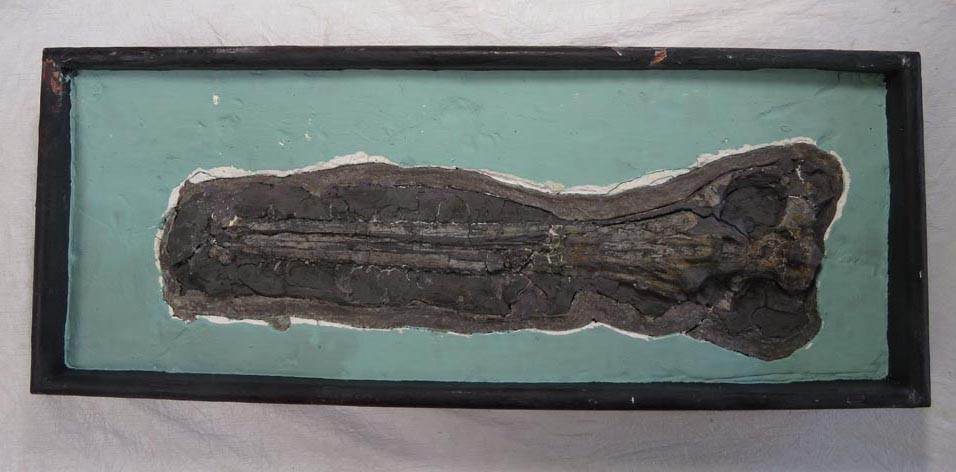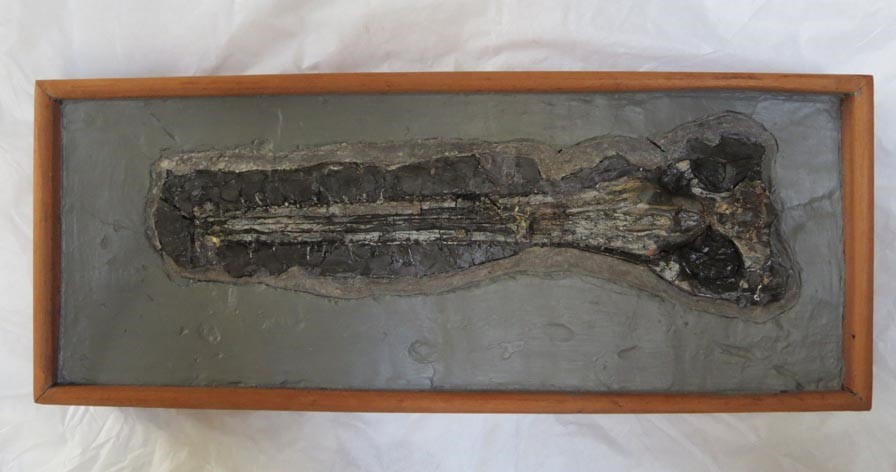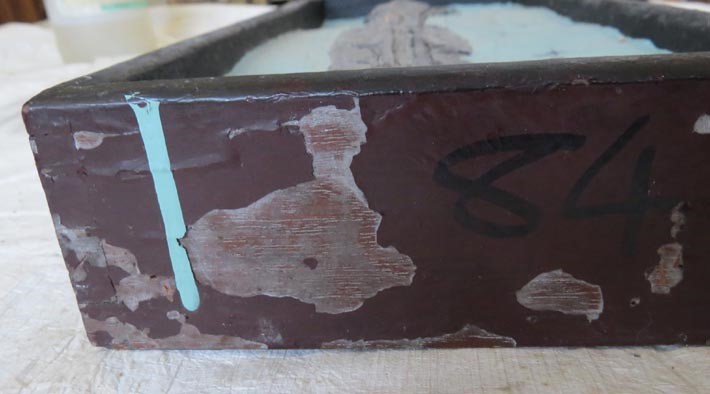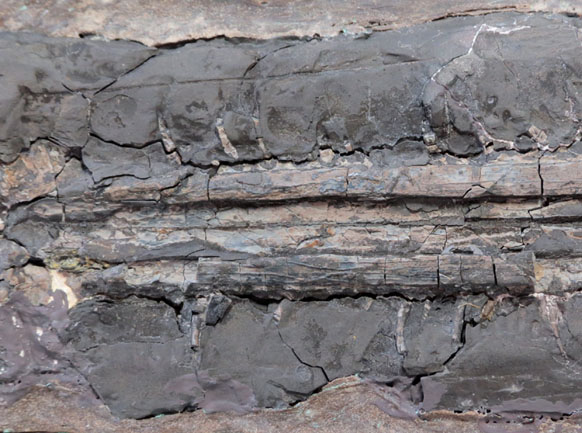Conserving a framed teleosaur skull from the Liassic of Whitby Nigel Larkin March 2015
Condition of the specimen: This complete teleosaur skull from the Whitby coast was mounted in plaster in a wooden frame many decades ago.
The skull itself is fragile, friable and cracked, possibly in part due to the pyrite decay at the tip of the premaxilla.
The specimen was also dirty and covered in an old black varnish.
The surrounding painted plaster etc was also dirty and paint was peeling off the old wooden frame. The specimen required cleaning, consolidation and repair.
Cleaning and conservation: The specimen and the surrounding area was gently cleaned with an airabrasive unit on a very low power
setting utilising sodium bicarbonate (the least aggressive powder). This enabled the removal of the dirt, dust and varnish from the specimen as well as the
thick paint surrounding it and in some places overlapping it.
It is clear that the specimen lays in some original matrix but that this is cracked and weak, and the specimen has been set in some sort of resin
which has in turn been surrounded with plaster of paris (which is rather uneven).
Once the specimen was clean and odd bits of plaster removed from cracks etc, the specimen was consolidated with Paraloid B72 in acetone at about 5%,
and some cracks were filled with Paraloid B72 adhesive to provide some strength to the specimen.


Above left: the specimen before work started.
Above right: the specimen after cleaning with the airabrasive and deliberately removing the surrounding paintwork.
Once this was done, many of the details of the specimen became clear, such as the tiny teeth protruding laterally out of the snout and
impressions where there had once been teeth, plus many little tooth sockets which had largely been invisible under the old varnish.
The old paint was removed from the wooden frame with a combination of scalpels and sandpaper, and the green paint on the surface of the
plaster was painted over with a grey acrylic artists paint to blend in better with the grey of the matrix and the grey of the
old resin in which the specimen was embedded, so that the specimen itself showed up better. The specimen is now a more ‘honest’ fossil
where the details can be seen and it is clear where the fossil ends and the matrix begins and in turn where the embedding resin and surrounding
plaster starts and ends.


Above left: the specimen after the woodwork had been stripped of the flaking paint.
Above right: the specimen after the surrounding paintwork had been tidied-up and painted grey.



Above left: the state of the wooden frame before conservation, with flaking brown paint and dribbles of turquoise paint etc.
Above middle: the frame after cleaning. Above right: Detail of the front of the skull, showing teeth and cracks in the specimen.
For more details about what we can do for you, or for a quote, please
contact:
enquiries@natural-history-conservation.com
We
are members of the Institute of Conservation.